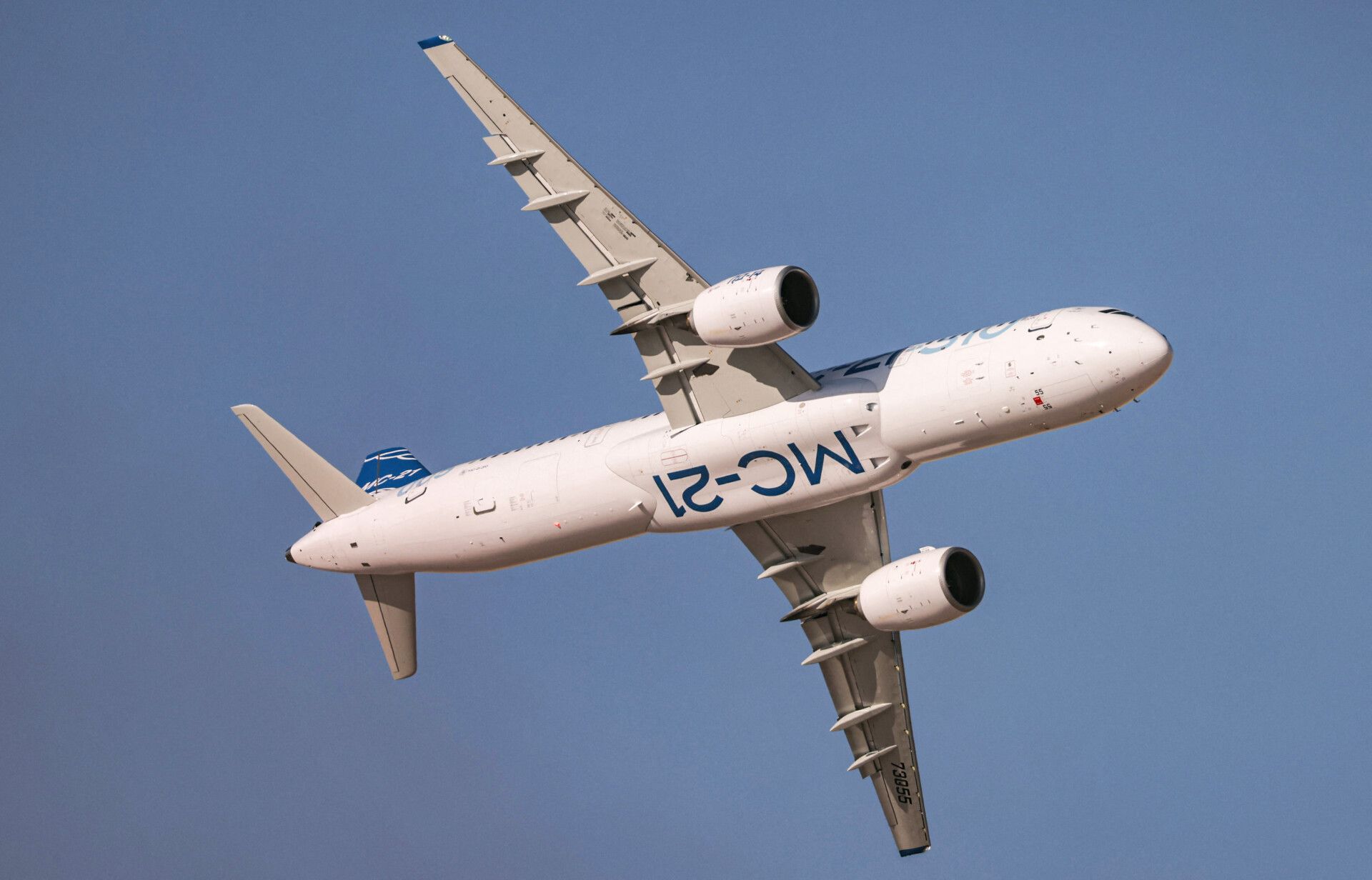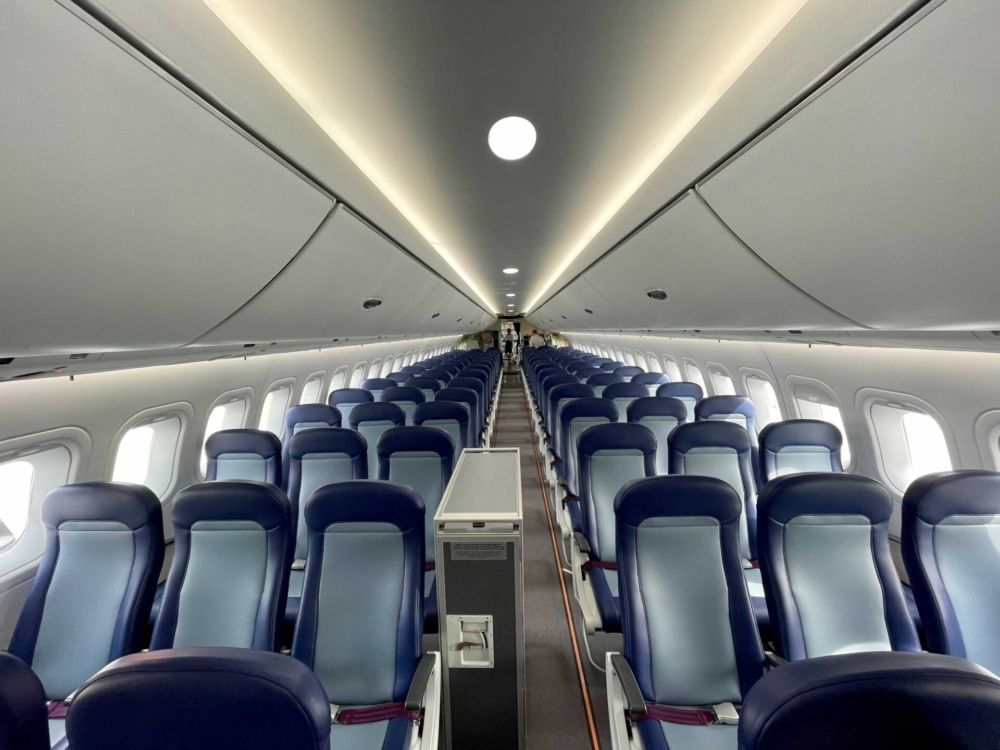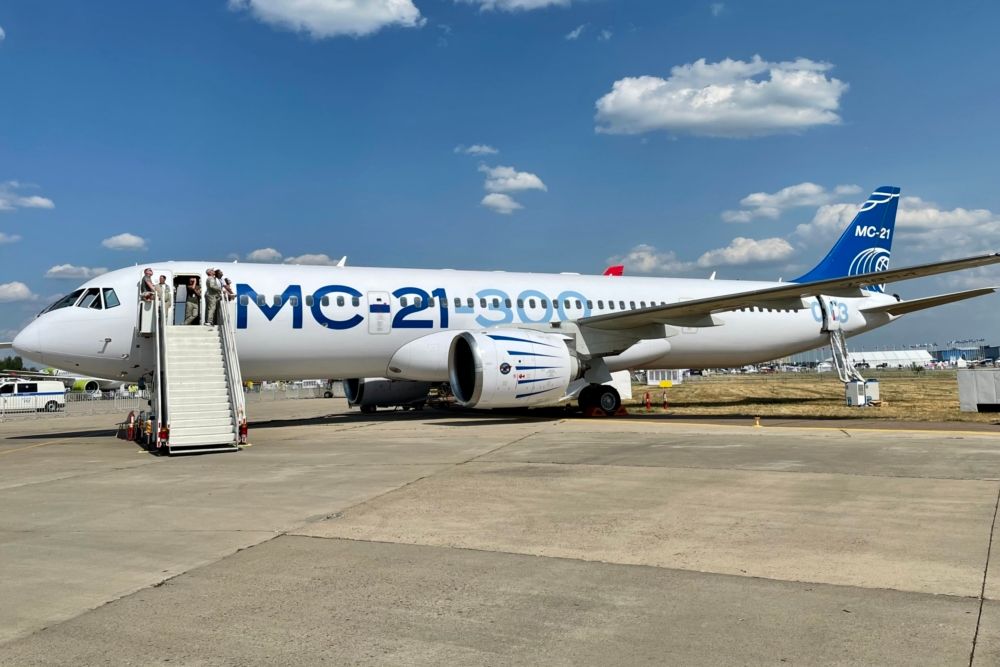Russia's narrowbody challenger, the Irkut MC-21, has reached another milestone. On Monday, the first wings built from Russian-made composite produced through a patented vacuum infusion technology rolled out from final assembly into the brisk Siberian air. Read along for video footage of the event.
A big step for the United Aircraft Corporation
The Irkut MC-21 is inching closer to certification - something that is expected to happen before the year is up. While, as is custom for new aircraft programs, experiencing delays, the aircraft finally took its first flight in May 2017 and began regular test flights two years later. The first MC-21 with the Russian-made Aviadvigatel PD-14 engines took to the skies about a year ago.
Soon, the turn will come to the first wings made with domestically produced composite. Rostec, the state corporation to which UAC and Irkut belong, announced on Tuesday that the first MC-21-300 aircraft with a Russian-made polymer composite wing rolled out from final assembly to the flight-test division one day prior.
'I would like to note that Irkut specialists managed to cope with the import substitution task and to start mass production of the aircraft with the Russian wings in the shortest time possible. The assembly of the first airliner is a big step for UAC and for the entire Russian aircraft industry. It shows the maturity of our aviation technologies and is yet another victory over the sanctions,’ said Sergey Chemezov, CEO of Rostec.
A video of the completed aircraft rolling out of the factory in Irkutsk can be seen below.
Mr Chemezov also noted that the combination of strong and light composite materials had allowed the designers to make a high-aspect wing, improving the aerodynamics of the aircraft as well as increasing the fuselage diameter. With its four meters and six centimeters, the wider cabin is one of the plane's unique features and, Rostec hopes, selling points.
Unique OOA manufacturing method
However, that is not the only stand-out feature of Russia's own composite wing. The wing is the first in the world to be built using out of autoclave (OOA) techniques. The manufacturer AeroComposit utilized a vacuum infusion technology that has been patented in Russia. Simple Flying's Joanna Bailey recently explored why this will matter not only to Russian aerospace but to the entire industry.
Overall, the share of composites for the entire MC-21 aircraft is 40%. The wing consists entirely of composite parts - apart from the ribs. Meanwhile, Airbus is also in the process of producing a new lightweight wing for its A320-family planes.
The planned wing will be longer and thinner, with improved aerodynamics and efficiency as a result. Airbus launched a demonstrator project in September this year. Completion is expected sometime in 2023.
Do you think the MC-21 truly marks a renaissance for the Russian civil aerospace industry? Share your ideas in the comments below.



